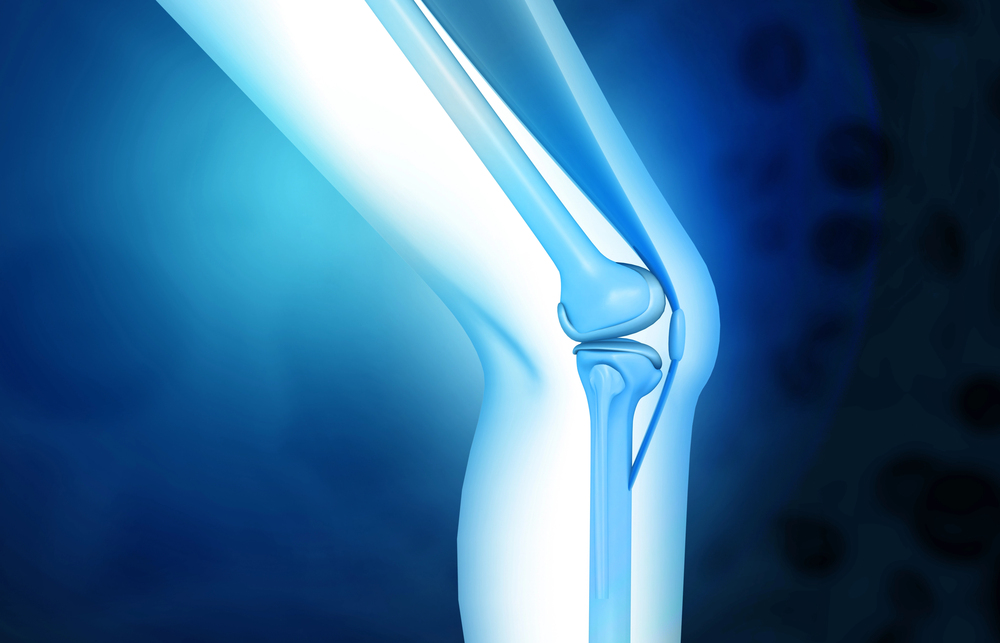Rheumatoid arthritis (RA) is a debilitating autoimmune joint disease characterized by bone loss and cartilage destruction. Bone homeostasis is disrupted with increased osteoclastic activity resulting in bone resorption (breakdown) and decreased osteoblastic activity resulting in impaired bone formation. Available RA treatment strategies slow disease activity and manage pain, but do not reverse bone loss.
Bone morphogenetic proteins (BMPs) are growth factors in the transforming growth factor-beta (TGF-β) superfamily. They are involved in bone formation and stem cell differentiation and have non-osteogenic activity in cartilage, muscle, kidneys, and blood vessels. Several BMPs have been identified. BMP-2 and BMP-7 are FDA-approved for fracture healing, however, adverse effects have been reported, and BMP-7 has been withdrawn from the market. Other BMPs, including BMP-9, are being studied as a more efficient and safer alternative to the current approved BMPs.
Preclinical studies show that BMP-9 stimulates osteogenesis, and its role in estrogen deficiency-induced osteoporosis is well established. Researchers are beginning to study its potential application in RA. Its ability to promote osteogenesis in RA is promising as a new and unique therapy that reverses bone loss.
The Study
A new study published in The Journal of Translational Medicine reveals the therapeutic mechanism of BMP-9 in rheumatoid arthritis.
Patient Synovial Tissue Study: Synovial tissue obtained from knee arthroplasty from 3 RA patients and 3 osteoarthritis (OA) patients was analyzed for BMP-9 expression. BMP-9 expression was downregulated in RA patients and significantly lower than in OA patients. This suggests that BMP-9 has a protective role, and the loss of BMP-9 expression plays a role in the pathogenesis of RA.
Experimental RA Mouse Model: BMP-9 expression was also assessed in the ankle joints of collagen-induced arthritis (CIA) mice. The CIA mouse model represents an autoimmune model of RA. Similar to human synovial tissue from RA patients, the CIA mice had significantly decreased BMP-9 expression compared to the control group.
BMP-9 deficiency exacerbates joint inflammation and promotes bone loss. Researchers tested BMP-9 supplementation in mice to see if there was improvement in any of the pathophysiological features of RA. They injected BMP-9 into the knee joint at weeks 0, 2, 4, and 6 and monitored its effect via CT scan each week after injection. They also monitored BMP-9 expression in the groups that received the injection and found that expression increased significantly.
Several beneficial effects of BMP-9 injection were observed:
- Anti-inflammatory: Prior to injection, CIA mice had increased limb swelling compared to the control mice. Ankle joint swelling was reduced, and histological analysis showed decreased inflammatory cells and improved histological morphology in CIA mice who received BMP-9 injections.
- Bone preservation and restoration: Prior to injection, CT scan revealed significant bone loss and trabecular bone destruction in the CIA mice. CIA mice who received BMP-9 injections had an intact trabecular structure, statistically significantly increased bone mineral density and bone mineralization and formation compared to the CIA group that didn’t receive treatment. The bone formation rate nearly reached normal levels in the BMP-9 treatment group.
- Osteogenic differentiation of synovial cells: Fibroblast-like synovial (FLS) cells have the potential to form different types of cells, including osteoblasts. In RA, if FLS cells are not differentiated, they can potentiate inflammatory cytokines, leading to bone and cartilage erosion. BMP-9 significantly enhances the osteogenic differentiation of synovial cells, as evidenced by increased alkaline phosphatase (ALP) activity and enhanced mineral nodule formation. Increased ALP levels suggest active bone formation, as it is a byproduct of osteoblast activity. Osteogenic differentiation is associated with the formation of mineral nodules visualized in this study.
- Bone resorption function preserved: Although increased osteoclastic activity leading to increased bone resorption may be detrimental to bone, it’s still important for bone health and remodeling. Healthy bone remodeling is dependent on a balance between osteoclastic breakdown and osteoblastic bone formation to preserve bone integrity and structure. Increased osteoclast numbers were seen in CIA mice; however, BMP-9 did not impact osteoclastogenesis. With BMP-9 treatment, the balance between osteoclastic and osteoblastic activity is restored.
Conclusions
BMP-9 is a promising therapeutic target for addressing bone destruction in RA. This new study showed that in mice, BMP-9:
- Alleviates joint inflammation
- Protects against bone loss
- Promotes osteoblast differentiation and bone formation
Its safety and effectiveness must be validated in clinical trials to see if it outperforms the current FDA-approved BMPs. BMP-9 may offer a novel treatment strategy for RA with its ability to stimulate osteogenesis, a factor that current therapies do not address.





